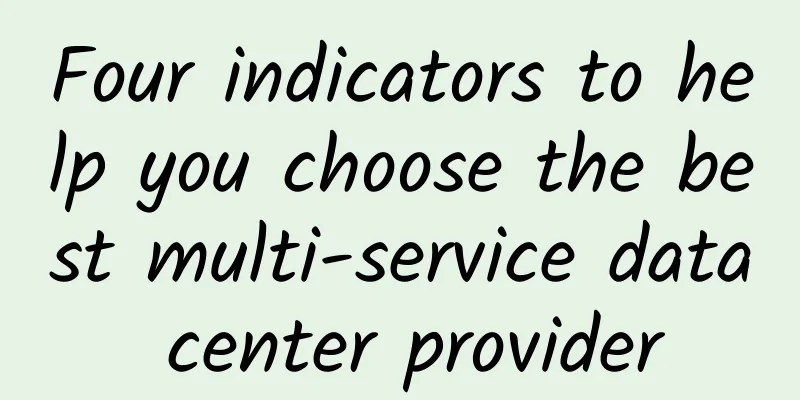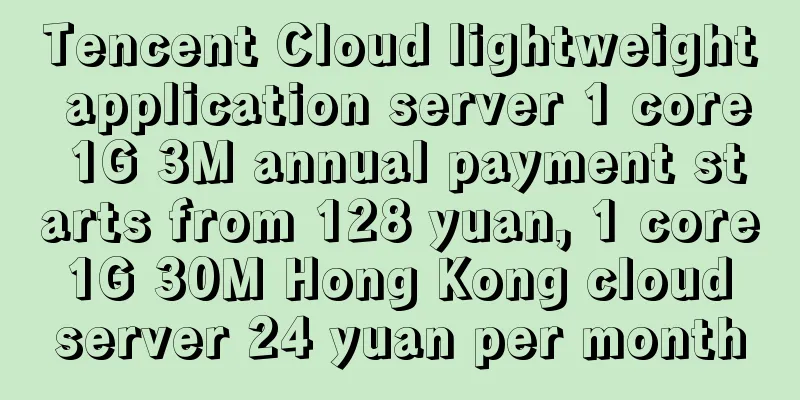Cisco ASAP helps you to subvert the traditional architecture by starting the full digital transformation of data center

|
[51CTO.com original article] Enterprise digital transformation has already been going on. In the United States, 130,000 enterprises have already started full digital transformation. The rapid development momentum of full digital transformation is spreading around the world. In order to meet the urgent needs of enterprise customers for full digital transformation, Cisco's technology transformation and innovation are also accelerating. Since its launch in November 2016, Cisco's new data center service model and architecture under the "ASAP" model have been highly recognized by users, and Cisco has successfully opened the prelude to full digital transformation. 51CTO reporter interviewed Zhu Lixin, Vice President of Cisco Greater China and General Manager of Greater China Product Department, and he explained how Cisco's highly anticipated ASAP will help enterprises achieve rapid transformation in the future. ASAP's Background: Taking the Crown Jewels and Scepter Zhu Lixin said that from the customer's perspective, there is only one goal to pursue - application is king. So what changes have occurred in the application during the evolution process?
First, in the future full digital transformation, application data will no longer be developed as a whole in large projects like in the past. Instead, data will be generated anywhere and at any time, and will show the characteristics of "real-time" and "distribution". "By 2020, 50 billion people, things, processes, and data will be connected together. Therefore, distributed and real-time data will be super-large-scale, which requires changes in the infrastructure to adapt to the evolution of data and applications." Secondly, the IT department is no longer the leader in infrastructure management. Instead, the business department, DevOps, and application development team jointly decide on the technology, investment, and deployment through cross-team cooperation. The resulting change is application-oriented, avoiding the problem of traditional IT management and resource allocation being out of touch with applications. ***, the location of workloads has also changed. More and more companies are choosing public clouds, so how can workloads always maintain consistency in resource matching SLAs regardless of whether they are in private clouds, public clouds, or data centers? This requires a hybrid cloud architecture that allows applications to enjoy unified resource services through a unified management platform. These three changes pose great challenges to IT and also bring a series of questions: What kind of cloud should enterprise users choose? How to build it? How to drive business development with applications, achieve automation, and improve business agility? How to protect enterprise information security and effectively ensure compliance and security? Zhu Lixin summarized that all answers still have to return to the essence of application being king. He emphasized that data analysis is the jewel on the crown and infrastructure is the king's scepter. Therefore, Cisco's key investment areas are also concentrated in the two directions of big data analysis and infrastructure. As Soon As Possible In order to help enterprise users realize "application is king", Cisco proposed the concept of "ASAP" for the entire data center architecture. In English, ASAP stands for As Soon As Possible, which means "immediately". Cisco has made another interpretation. Zhu Lixin explained in detail that the first letter "A" stands for Analysis, which puts the jewel in the crown in the first place. The life of the enterprise in the future will rely on data analysis to make intelligent decisions, help improve customer experience, improve production efficiency, and reduce costs; the second letter "S" stands for Simplify, which includes three levels, one is the simplification of infrastructure, one is the simplification of hardware, and the other is the simplification of management; the third letter "A" represents dynamic automation; the fourth letter "P" stands for Protection, which ensures that everything is based on security. The reporter learned that the pillars of Cisco ASAP data center include: first, optimizing infrastructure; second, simplifying operations, achieving automation and unified strategy; third, building a cloud application stack; fourth, deploying a hybrid cloud suitable for customers. In addition to the cloud platform, it must also be applied to data sources to end users; fifth, real-time analysis capabilities and big data analysis. Zhu Lixin said that Cisco ASAP Data Center closely combines analysis, simplicity, automation and protection with consistent policies, and applies them to hybrid clouds that combine industry-leading data center networking, security, converged infrastructure and software-defined solutions. It is understood that ASAP data center adopts hybrid IT transformation, widely integrating the advantages of cloud into the application-centric model, allowing IT organizations to deploy applications where they can be most effective by integrating local data centers and any number of clouds; at the same time, it achieves agility and security, allowing IT departments to continuously monitor the environment, ensure compliance, and meet the continuous needs of business departments and application developers for infrastructure; helping enterprises ensure that there will be no delays or service interruptions, while providing a consistent and reliable user experience, thereby maximizing application performance. ASAP data center helps customers share real-time analysis on a simple converged platform, realize operational automation and make wise security decisions, so as to continue to innovate and seize new opportunities. Five key components of ASAP Zhu Lixin told reporters that ASAP is actually a summary of Cisco's past data center evolution and a guiding framework for the future development direction of adapting to the cloud. Cisco has refined the five most critical components of the data center into ASAP, allowing UCS, HyperFlex, converged architecture, and ACI components to form an overall architecture, turning the isolated system of the past into a complete closed-loop system and a self-evolving system, which has both the infrastructure of a modern data center and the infrastructure adapted to the cloud, as well as resource scheduling and big data analysis, so as to achieve better and correct strategies for resource allocation and scheduling. UCS (Unified Computing System) Figure: Cisco UCS product family Currently, the hyper-convergence products on the market often only include "computing" and "storage" but not "network" and "management". When Cisco's hyper-convergence was launched, it was the most complete hyper-convergence in the industry, including a unified management platform, computing, storage resource pools, and networks. Currently, Cisco has dozens of successful hyper-convergence cases across the country, and every customer understands the advantages that Cisco's hyper-convergence brings to them, including easy maintenance, simple expansion, and flexible expansion. ACI (Application Centric Infrastructure) ACI is actually Cisco's SDN solution. Cisco's ACI architecture is secure, automated and has unified policies. Currently, tens of thousands of customers around the world have deployed Cisco ACI data centers. More than 100 ACI customers in China have placed their data center core applications and production networks on ACI-based data centers. HyperFlex (Hyper-converged system) Cisco HyperFlex hyper-converged system represents the next generation of hyper-converged infrastructure and is the industry's first complete end-to-end hyper-converged solution. Cisco has more than 1,000 customers in less than three quarters after launching HyperFlex globally. HyperFlex system simplifies policy-based automation of the entire network, computing, and storage for the widest range of enterprise applications, fully meeting the requirements of today's IT environment composed of microservices, containers, new applications, and clouds. HyperFlex provides an ideal platform for customers to deploy enterprise-class applications in their data centers as well as remote and branch offices. HyperFlex can manage resources and provide fully automated deployment and management for the entire IaaS private cloud architecture. This is UCS Director plus HyperFlex. In addition to being easily scalable, it can also achieve highly automated management, providing customers with an overall small private cloud architecture. When users perform an entire hardware backup, Cisco's storage server S3260 can be used with many common backup software in the industry to create a backup and archive resource pool. Cisco CloudCenter Cisco CloudCenter is positioned at the orchestrator level in the cloud architecture. Its most significant feature is that it is cross-platform, and whether it is multiple data centers, private clouds, public clouds, or hybrid clouds, Cisco CloudCenter can make unified and free deployment of various applications, virtual machines and other resources from the perspective of the application life cycle. Cisco Tetration Analytics Tetration Analytics collects network traffic data from hardware and software sensors and uses advanced machine learning techniques to analyze the information. Tetration Analytics meets the requirements of key data center operations, including compliance, application forensics, and migration to whitelist security mode. Through uninterrupted monitoring, analysis, and reporting, the Tetration Analytics platform can help IT managers gain in-depth insights into data center dynamics, thereby significantly simplifying and improving operational reliability and security, while easily and reliably helping users ensure access consistency when complex applications migrate between various cloud solutions. [51CTO original article, please indicate the original author and source as 51CTO.com when reprinting on partner sites] |
<<: The maturity of 5G technology is the key to the real implementation of autonomous driving
Recommend
TmhHost 30% off: Hong Kong CN2/Los Angeles CN2/Los Angeles High Defense/Japan SoftBank VPS monthly payment starts from 24 yuan
TmhHost is a Chinese hosting company founded in 2...
iOVZ VPS 20% off monthly payment, 30% off annual payment, Korean (SK)/US (Coresite) data center
iOVZ Cloud has launched a regular promotion for M...
[12.12] DogYun Dynamic Cloud 40% off, Classic Cloud 20% off, Dedicated Server 100 yuan off per month, Lucky Wheel Prize draw
DogYun is a Chinese hosting company founded last ...
Can 5G RedCap technology help operators regain confidence?
As my country has built the world's largest 5...
Sharktech: 10Gbps unlimited traffic high-defense server starting from $329/month, data centers in Los Angeles/Denver/Chicago/Netherlands
Sharktech (also known as Shark Data Center, SK Da...
Kunpeng spreads its wings and Zhejiang has great potential. The briefing session of Kunpeng Application Innovation Competition 2020 (Zhejiang Division) was a complete success!
On the afternoon of July 31, 2020, the Kunpeng Ap...
The rise of the NetOps engineer
NetOps, also known as NetDevOps, is the practice ...
Cisco releases new developer capabilities for intent-based networking platform
Cisco today announced new developer capabilities ...
AlienVPS: 1Gbps unlimited KVM in Psychz data center in Los Angeles starting at $5 per month
The AlienVPS.net domain name was registered last ...
Home users use routers to surf the Internet, so how many mobile phones can be connected to one router at most?
I think everyone is still curious about this ques...
The new role of IT departments in data center operations and management under the background of green energy conservation
Traditionally, the operation and management of da...
Will 5G replace WiFi? Not in the short term
As global operators begin to pave the way for com...
AkkoCloud: UK CN2 GIA/Germany CN2 GIA/US CN2 GIA annual payment starts from 299 yuan
At present, it is still a good choice to visit ov...
Interpretation: Radio and Television "One Network Integration" and 5G Business
On the afternoon of March 2, the State Administra...
Launchvps: $19.95/year KVM-768MB/20GB/768GB/Philadelphia Data Center
Launchvps recently launched two special annual pa...









